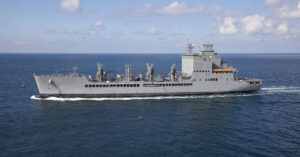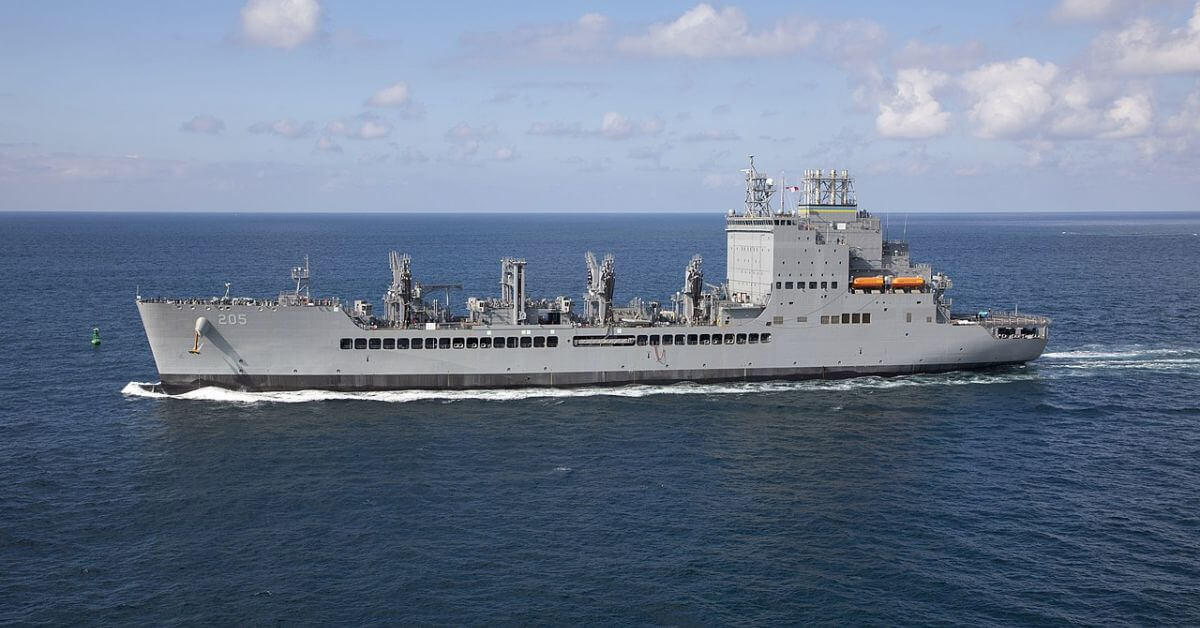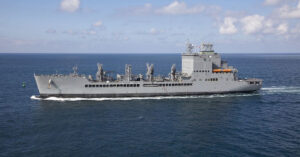
Piraeus Port Dockers Set Up Blockade To Stop Shipment Of Ammunition To Israel
October 21, 2024
Maersk Starts New Container Service Into Ukraine Amidst Russian Attack On Shipping
October 21, 2024

The U.S. Navy has entered into a contract with U.S. Marine Management to charter a U.S.-flagged tanker at almost double the average market rate.
This shows the government’s commitment to secure U.S.-flagged ships that meet its stringent military operations requirements.
Although the charter rates in the Pacific are low, the Navy’s need to obtain ships with stringent specifications, operational demands and adherence to certain national standards has led to this increased cost.
This charter is valued at 14 million dollars for the first year, with a daily rate of 38,356 dollars.
Meanwhile, the Baltic Exchange has assessed the average rate for medium-range product tankers in the Pacific at 18,700 dollars per day. According to shipbroker BRS Group, the rate for advanced scrubber-fitted eco-tankers is around 29,500 dollars per day.
The Military Sealift Command is handling this deal and covers five years, with the choice of extending it through 2028.
If all the option periods are considered, the deal might total $73.3 million. Per the contract, the tanker must carry at least 38,500 barrels of oil, mainly jet fuel. It must be able to ship two separate clean products together without impacting the capacity.
The procurement process was competitive, with 12 offers. The emphasis on U.S.-flagged and reflagged ships narrowed the field.
The preference for U.S flagged vessels is because of national security concerns as the country continues to bolster its ability to maintain a steady supply of military cargo and other goods during a time of crisis.
The fleet of U.S Marine Management is valued at 162 million dollars and comprises five tankers and a RORO ship.
The Badlands Trader, constructed in 2016 is operated by MSC. Other two tankers, the Shenandoah Trader and Yosemite Trader are available for government contracts.
This decision of the Navy comes after the grounding of USNS Big Horn oiler and the closure of the Red Hill Bulk Fuel Storage Facility in Hawaii which has impacted the logistics chain of the Navy.
Red Hill was an important facility to store and distribute military fuel across the Pacific. However, it was closed after fuel leaks contaminated local water supplies, leading to environmental concerns.
As the onshore facility is no longer operational, the Navy now has to ship fuel across vast distances. For this, it needs reliable U.S.-controlled tankers to secure its fuel logistics in a region where geopolitical tensions are rising.
However, the question is if securing just one U.S.-flagged tanker is enough to ensure a reliable fuel supply in the Pacific, given the massive shortage of tankers and oilers that the Department of Defense is facing.
The U.S. Navy will require around 100 tankers in case of a conflict in the Pacific, and now it has just 10. If the navy does not formulate a plan to secure its fuel supplies, it might face shortages at a critical time, leaving it stranded in case of a conflict in the region with China.
Though critics highlight the massive cost of this particular deal, the Navy wants to build a U.S.-controlled fleet of tankers in the Pacific which would be readily available and meet the standards of military deployments without compromising national security.
Reference: TradeWinds
U.S Navy Charters Tanker At Double The Market Rate To Secure Fuel Supplies In The Pacific appeared first on Marine Insight – The Maritime Industry Guide
Source: Maritime Shipping News


